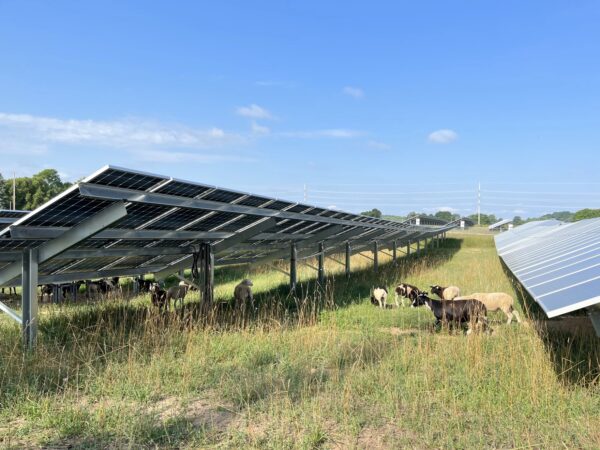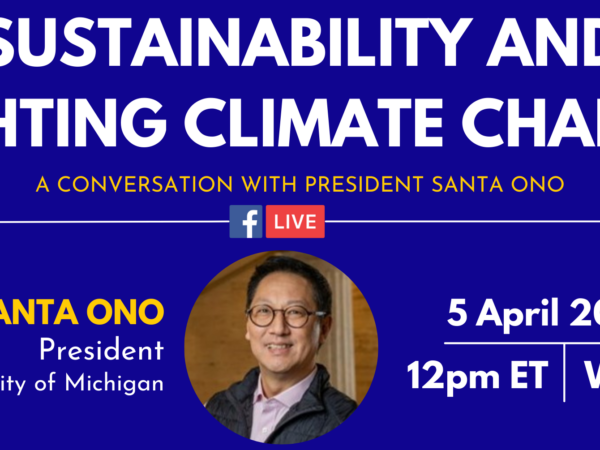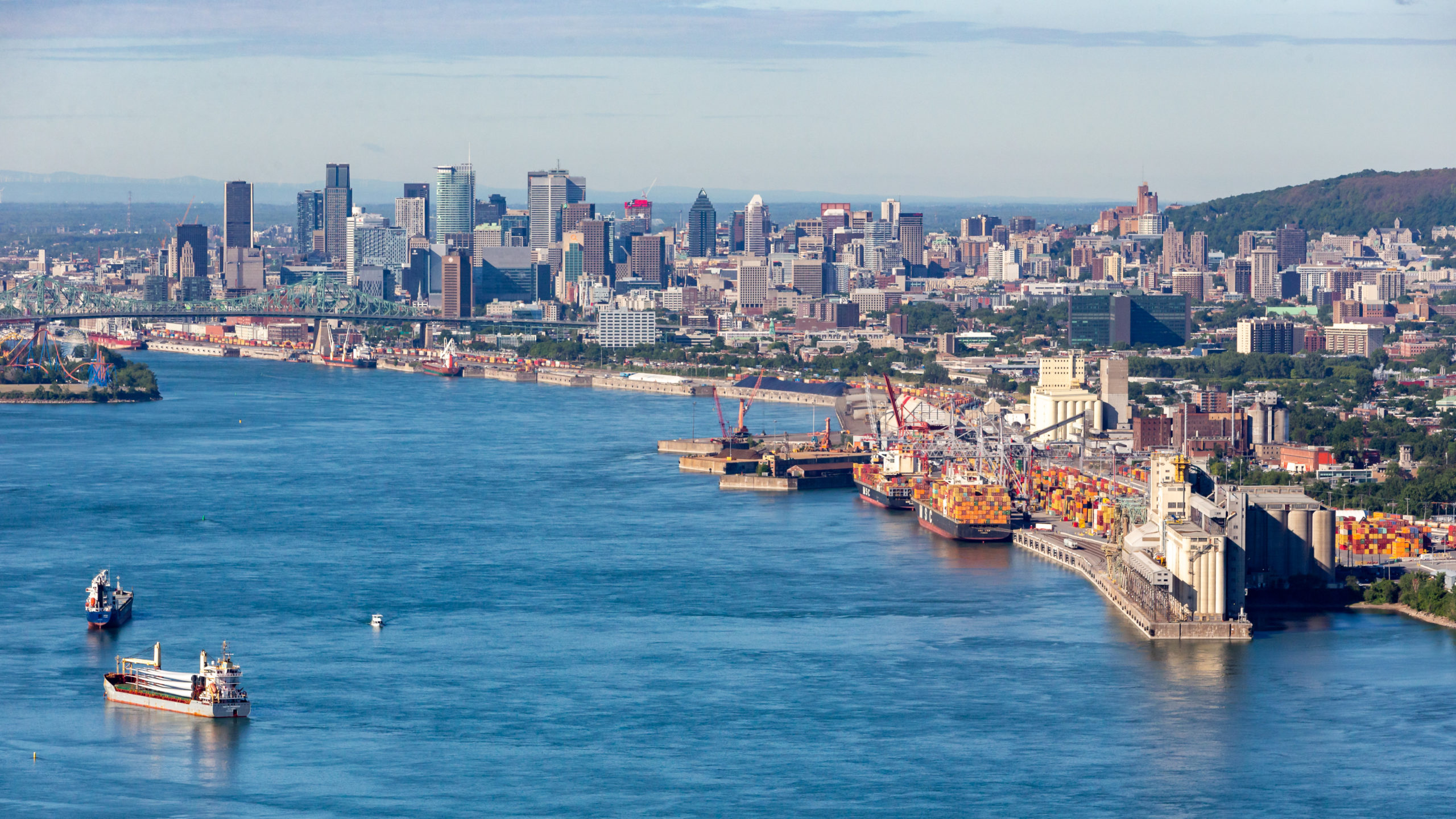
Shipping companies and ports around the world and on the Great Lakes are launching sustainability efforts to lessen their environmental impact, combat climate change, and improve their efficiency and images. With support from the Solutions Journalism Network, Great Lakes Now Contributor Kari Lydersen is reporting the four-part series “Sustainable Shipping.”
Read them here:
Are voluntary efforts enough to improve port sustainability?
Burns Harbor port tries to green Indiana’s industrial coast
At the Port of Milwaukee the wind blows toward a greener future
And watch for the “Sustainable Shipping” segment in Episode 1031 of the Great Lakes Now monthly program.
Ocean-going ships known as “salties” glide through the Gulf of St. Lawrence, past breaching humpback whales and deep green forested shores, into the St. Lawrence River and on to the Port of Montreal – their gateway into the Great Lakes region.
At this key juncture between Europe and the American heartland, each year 40 million tons of grain, gravel, gypsum, raw sugar, salt, iron ore, petroleum products, chemicals, fertilizer and shipping containers are transferred between trains, trucks, barges and ships, including salties and “lakers” that remain within the Great Lakes.
Like many ports, Montreal’s is also located in the heart of a dense urban community, meaning the noise, light, traffic and pollution from its operations directly affect local people, not to mention the sensitive ecological environment.
But the Port of Montreal has been a leader in adopting green and sustainable practices and technologies and working with communities and partners to reduce their impact, while also doing things beneficial for the environment.
In 2007, the port became a founding member of Green Marine, a voluntary certification organization for the shipping industry where ports, shipping terminals and ships can earn scores on different sustainability measures and share information on best practices.
In 2019 and 2020, Montreal earned the top score of 5 in all Green Marine categories relevant to ports: air emissions, waste management, spill prevention, environmental leadership, bulk handling and community impact. Seattle was the only other port with a perfect score, among Green Marine members across the Great Lakes and East, West and Gulf coasts of North America.
Through the Green Marine program, Montreal hopes to lead by example while also sharing ideas with and learning from other ports.
“I honestly believe there is a certain amount of peer pressure – the other folks are doing it, why not me?” said Daniel Dagenais, vice president of operations at the port. “You really set the bar for your own self and you’re learning about sustainable development in a different way, breaking it down into objectives, smaller footsteps in order to improve. And we can learn from each other as well. I think it is a game changer.”
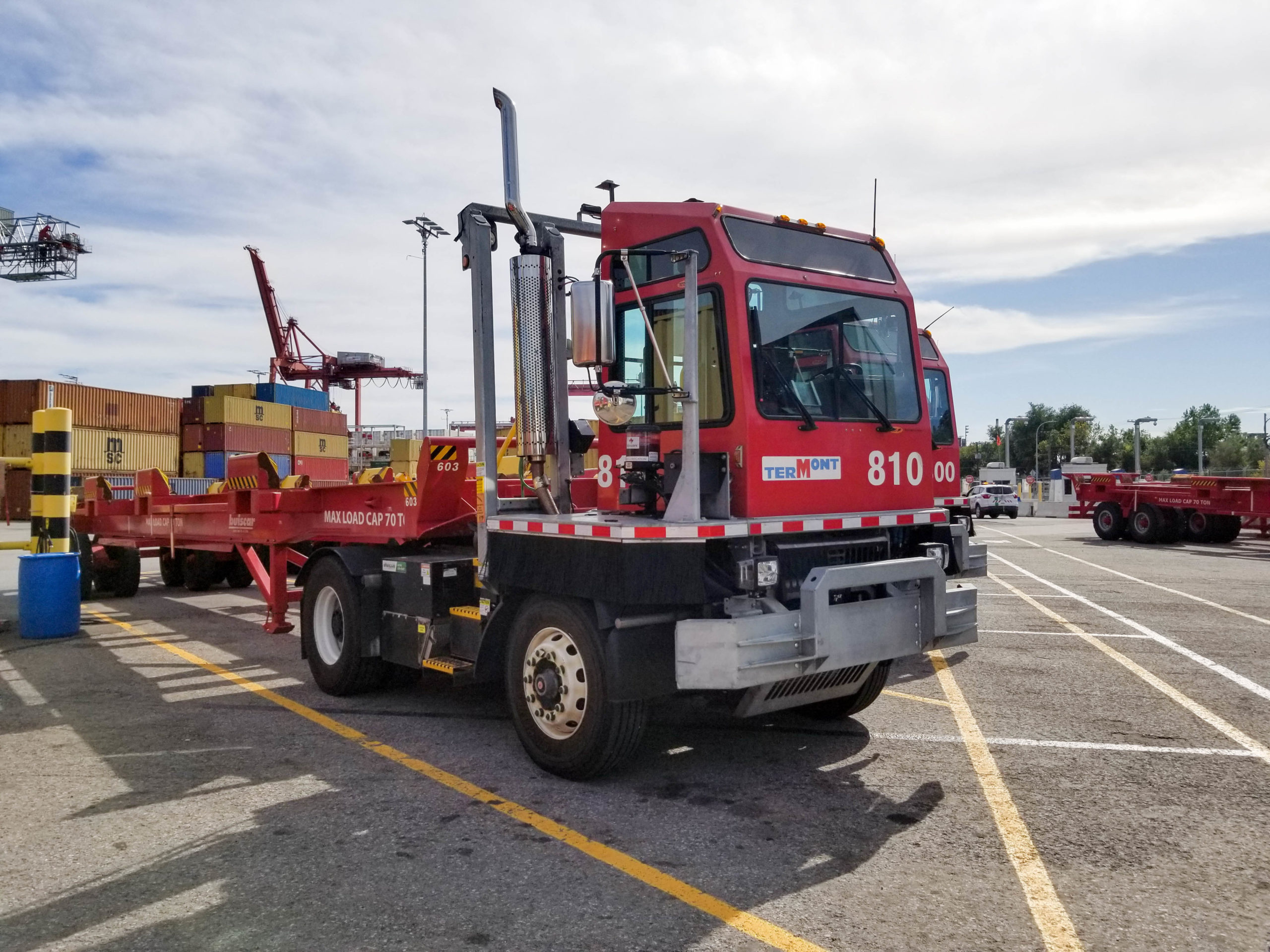
(Photo courtesy of Termont Montréal Inc.)
Fuel, power and emissions
A major source of the air emissions coming from ports are the ships that are docked there as they load and unload or spend the winter.
Since 2017, the Port of Montreal has provided electric power that ships can plug into while docked, to run their refrigeration, lights and other electric needs, rather than running their engines to produce electricity.
The port has 20 such berths, and last year, 26 cruise ships or ships spending the winter used Montreal’s shore-side electrification, eliminating 3,200 tons of greenhouse gases that would otherwise have been released, according to the port.
The port offers liquefied natural gas for refueling – a cleaner-burning fuel than the diesel that is typically used in ships. The port increased LNG operations from four in 2017 to 31 last year.
This year the port signed an agreement with the fuel company Greenfield Global to develop “green hydrogen,” ethanol and methanol as fuel sources that are less energy-intensive than traditional fuel.
The port also has a fleet of hybrid service vehicles and low-emission train locomotives on the rail network that is part of the port.
These improvements reduce emissions of the greenhouse gases that cause climate change, and also sulfur dioxide, nitrogen dioxide, particulate matter and other compounds that present a public health risk.
The port has been inventorying and publicly posting its greenhouse gas emissions, both those created by the Port Authority and its tenants – companies that rent space for their operations. Since its baseline year of 2007, the port says it has reduced greenhouse gas emissions by 45%.
“We use shore power to reduce greenhouse gases, we’re using clean hydro-electricity for the shore power,” said port spokesperson Melanie Nadeau. “We have the incorporation of glass powder in cement so that our concrete is greener in the sense that every cubic meter of concrete generates 20% to 30% less greenhouse gases. We’re always questioning how we do things, we’re questioning the materials we use, the techniques we use.”
Going green and building community
The Port of Montreal generates $26 billion annually in economic impact and creates 19,000 jobs, according to the port. As such a large and critically positioned port, Montreal has arguably more money to spend on sustainability initiatives than many other ports. But like other ports, it has also been something of a mystery to many local residents.
That’s why Montreal has made it a priority to open the port to the public and inform and involve them in discussions about operations.

Grand Quay (Photo courtesy of Port of Montreal)
The Grand Quay on port property is a public space, where impermeable surfaces have been replaced with gardens and green roofs, reducing stormwater runoff while also providing a free, beautiful place for public events and recreation.
The port also ceded a 2-kilometer stretch of riverfront land to the city, making way for a bike path and parks.
In 2019, it held 15 public tours of the port and 16 public events that drew almost 5,000 people. Employees also participated in community events like a kayak challenge and a bike tour to benefit the MS Society of Canada.
During the pandemic, the port opened up space for homeless people to stay and contributed to food pantry programs. It also launched a program called CargO2ai to streamline the flow of goods needed specifically to fight the pandemic.
As part of its mission of mitigating its impact, the port has also invested in protecting wildlife and habitat.
It does fish habitat restoration on five islands it administers in the St. Lawrence River, and it is working with Environment Canada to have the islands designated a national wildlife area to protect species like the western chorus frog, peregrine falcon and bank swallow. The port installed nesting boxes on its property, where more than 300 chicks were born, and it is home to a beekeeping operation.
In 2019, the port had 10 public meetings related to its work, including a working group related to an in-the-works project: creation of an 8-foot planted embankment to shield the surrounding area from noise, light and dust while also creating greenspace. The port has promised to plant 2,000 trees by 2024 and is halfway to that goal.
“The public wants to know what value does the port bring to me?” said Dagenais. “It used to be that the people who lived around port worked at the port. That got dislocated – now the people who work at ports live in the suburbs 50 kilometers away. Our neighbors (now) have different expectations of us, they are far more vocal with social media, they make themselves seen or heard.”
Working with tenants
Like many ports, Montreal rents space to tenants. That can present challenges on the sustainability front, since it’s hard for ports to demand those companies make sustainability investments themselves.
“The limit of our initiatives is really whether our operators and users are going to take it up,” said Dagenais. “Are they going to move to LNG, battery-powered vehicles, methanol as a source of energy? How much can they invest to advance their own processes and equipment?”
Green Marine has a separate membership category for port tenants or terminals, and six of Montreal’s tenants – representing the majority of their terminals – have joined Green Marine and committed to their own improvements.
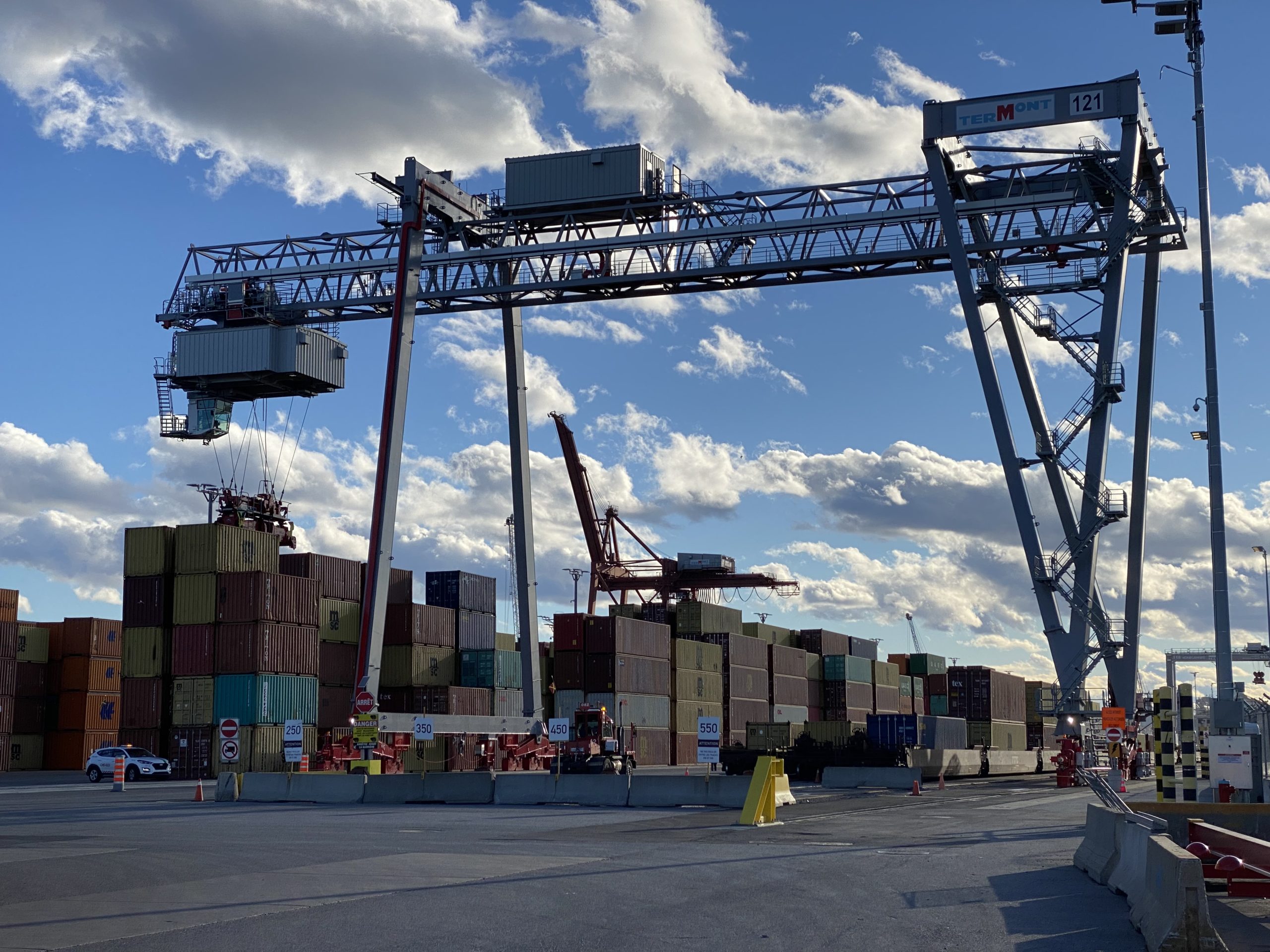
Termont’s electric crane (Photo courtesy of Termont Montréal Inc.)
Termont, the tenant that manages container transfers at the port, is a Green Marine member and has made major sustainability investments.
They are installing technology on trucks that causes their motors to automatically stop when they are not moving, reducing emissions from idling by about 30%. Termont acquired a huge electric-powered rail-mounted gantry crane that can lift containers directly from ships onto rail cars or staging piles, rather than using trucks to make the transfer, greatly cutting down on truck emissions.
Julien Dubreuil, Termont general manager of operations at the port, said the crane “eliminates all the transport within the yard we used to be doing, which was all done with trucks that were diesel powered. It’s a win, win, win situation. It’s a win on efficiency, it reduces greenhouse gases, and there’s obviously an economic advantage. The initial investment of course is bigger but the way we look at it, it is a longer view, in terms of finances and greenhouse gases. Basically that’s just a starting point for any project – is there a way we could do this better?”
Among various other investments, they are also planning to use beet juice rather than chemicals to augment road salt as needed when temperatures dip to sub-freezing levels.

Julien Dubreuil, general manager of Termont Montréal Inc. (Photo courtesy of Termont Montréal Inc.)
Dubreuil noted that the company tries to be in constant conversation with community members and sustainability experts, and actually got the beet juice idea from environmental studies students at the Université de Sherbrooke who studied the port and made suggestions.
“Now instead of chemicals, we’ll be using a byproduct that comes from beet production, something that used to be thrown in the garbage,” said Dubreuil.
Lise Rémy, spokesperson for the oil handling company Valero, said the company joined Green Marine in 2018 because of the port’s leadership, and has improved its sustainability performance since.
“This is reflected in day-to-day operations through the establishment and integration of practices to reduce the environmental footprint of our activities and good relations with residents living close to our facility,” she said. “Our partnership with the Port of Montreal is important to us. It is under their leadership towards Green Marine that we decided to get the certification and adhere to the program.”
In other examples of sustainability strides made by tenants, a cruise ship company operating out of the port took measures to slash its freshwater consumption by 75%, and a grain handler invested in technology to greatly increase its energy efficiency and reduce dust. A maritime employment company switched its training to simulation, cutting the use of diesel engines for that training. An oil company began capturing the vapors that escape as it loads and unloads fuel. And a tank farm prioritized storing and shipping biofuels, to be part of the overall clean energy transition.
Dubreuil said that the tenants at the port help reinforce a culture of sustainability, raising the bar for each other and providing concrete examples of improvements others could adopt. Joining Green Marine is an obvious choice once a company has made a commitment to sustainability.
“It’s not a competition, not a race, we look at what the others are doing and see ‘that might be pretty good for us,’” Dubreiul said. “’I see you’ve done that project, how does it work for you, what are the benefits you’ve had?’ We encourage one another.”
Catch more news on Great Lakes Now:
Sustainable Shipping: At the Port of Milwaukee the wind blows toward a greener future
Sustainable Shipping: Burns Harbor port tries to green Indiana’s industrial coast
Green Marine: Are voluntary efforts enough to improve port sustainability?
Featured image: Port of Montreal (Photo courtesy of Port of Montreal)



